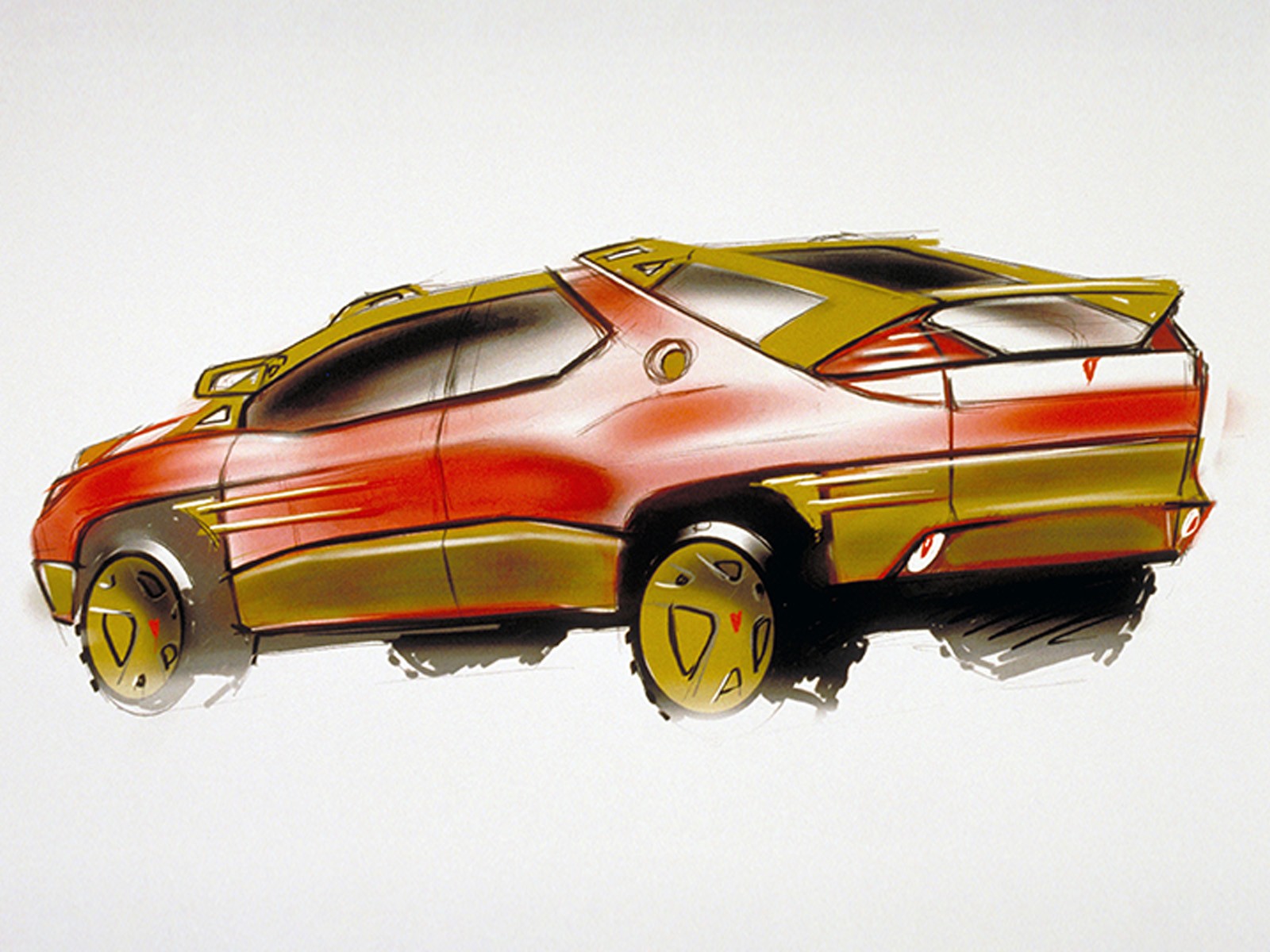The Pontiac Aztek. A name that evokes strong reactions, often associated with automotive infamy. But beneath the controversial exterior lies a fascinating design story. Thanks to the GM Design Heritage Archive, we have access to exclusive, never-before-published sketches that offer a glimpse into the early design process of the Pontiac Aztek Concept. These sketches reveal the evolution of the Aztek from initial ideation to a more refined concept, showcasing the creativity and challenges involved in automotive design.
From Camaro-Blazer Blend to Reality: Initial Design Explorations
The Aztek’s genesis began with a bold directive: blend a Camaro and a Blazer. These early sketches, dating back to around 1997, reflect this ambitious vision. One unsigned sketch, potentially digitally created, reveals a three-door design with prominent strakes, contrasting plastic cladding, high-mounted indicators, and a distinctive structural frame around the passenger cabin. While elements like the rear windshield and tailgate integration show early-stage design challenges, the sketch captures the essence of the Aztek’s rugged, adventurous spirit.
Another sketch by Brigid O’Kane, the designer behind the original “Bear Claw” truck-based concept, presents a softer, more organic approach. The wheel arches are rounded, the cladding less pronounced, and the overall feel less aggressive. This sketch hints at the Aztek’s potential as a versatile crossover, showcasing a more refined and less polarizing aesthetic.
Refining the Vision: Detailed Sketches and Emerging Identity
As the design progressed, the Aztek’s identity began to solidify. A more developed sketch by O’Kane exhibits a higher level of detail, featuring realistic glazing, door handles, mirrors, and a more cohesive lower body cladding. The signature split grille and prominent Pontiac nostrils emerge, along with large round lower lights. This sketch demonstrates a significant step towards the final concept, though elements like the dual horizontal taillights would eventually be revised.
Later sketches, though previously published, highlight the exploration of different themes. One version further develops the softer, more organic direction, while another presents a sleeker, more premium aesthetic without the contrasting cladding. These diverse approaches underscore the iterative nature of design, where multiple concepts are explored before a final direction is chosen.
From 2D to 3D: The Aztek Clay Model
The final image reveals a quarter-scale clay model – a crucial step in the design process. This half-model, reflected in a mirror, showcases the meticulous craftsmanship of clay modelers. Covered in a specialized plastic film and painstakingly detailed, the clay model allows designers to evaluate the design in three dimensions, refine proportions, and assess the overall aesthetic impact.
The Legacy of the Pontiac Aztek Concept
The Pontiac Aztek concept’s journey from initial sketches to clay model offers valuable insights into the complex and often secretive world of automotive design. These rarely seen images provide a unique opportunity to understand the creative process, the challenges faced, and the evolution of a vehicle that, despite its controversial reception, holds a significant place in automotive history. Thanks to the GM Heritage Archive for providing access to these invaluable documents.


